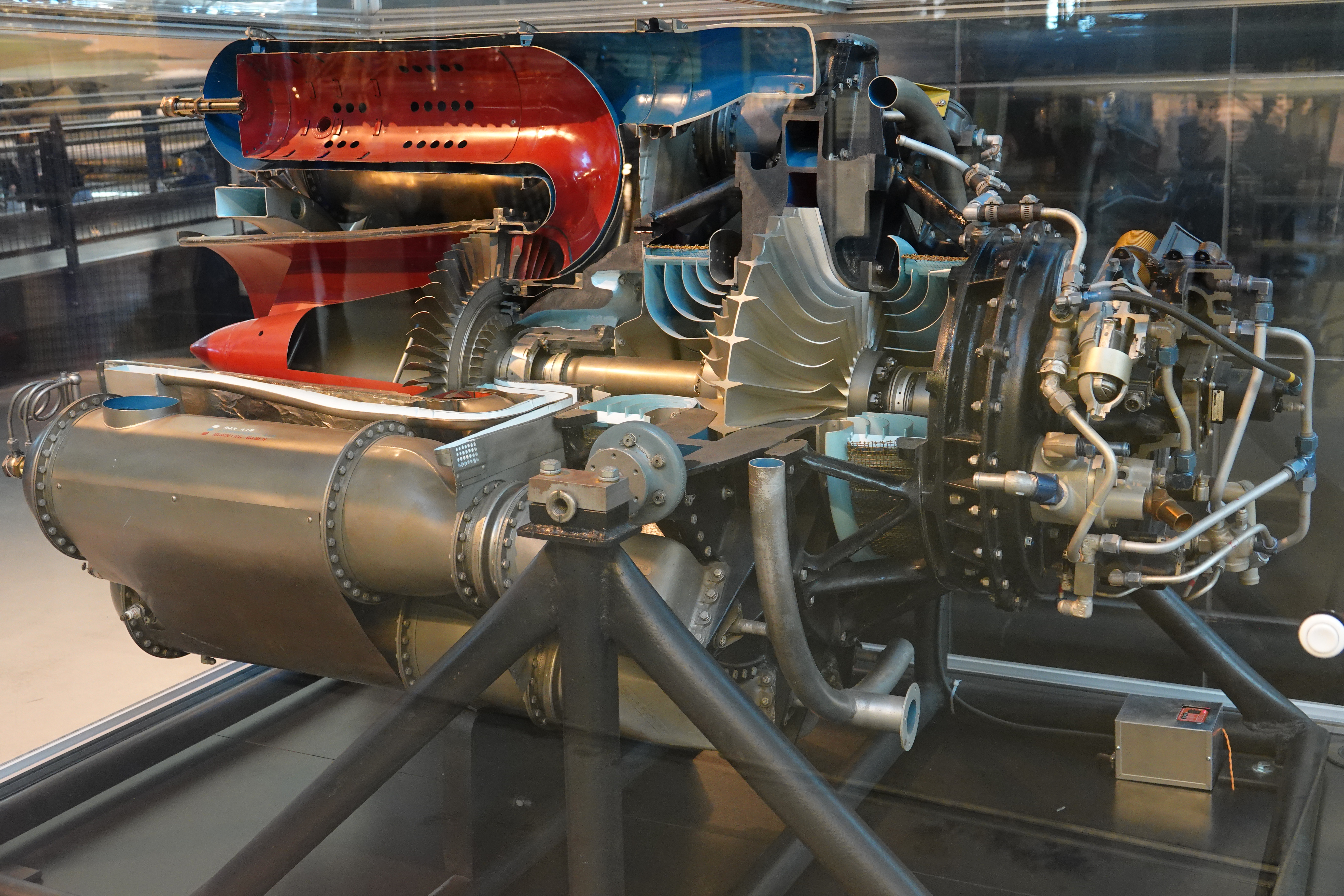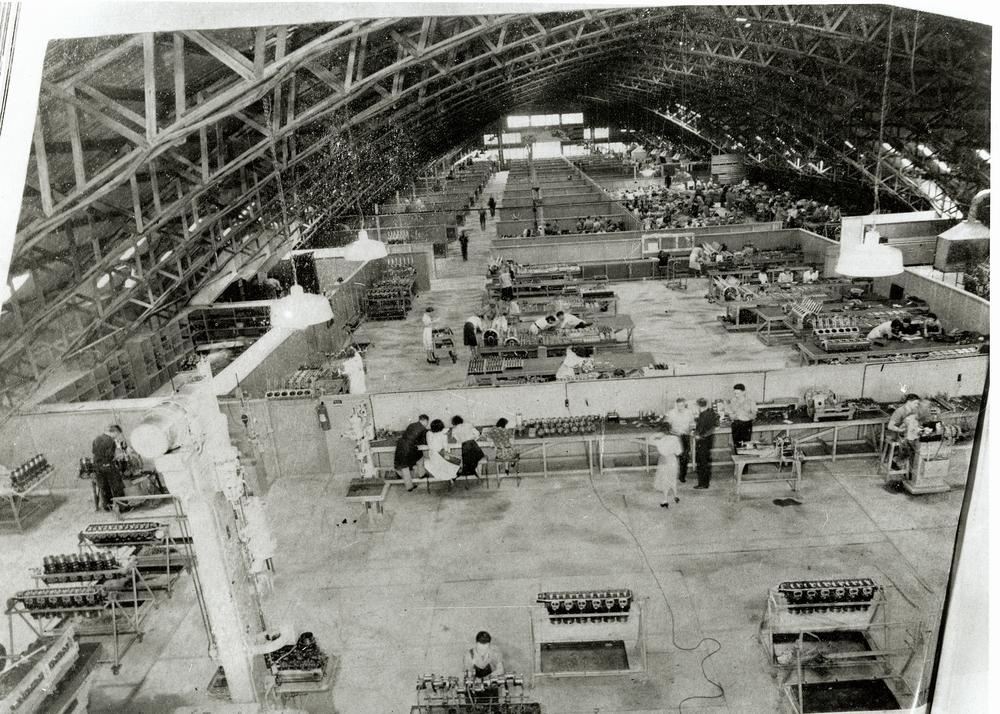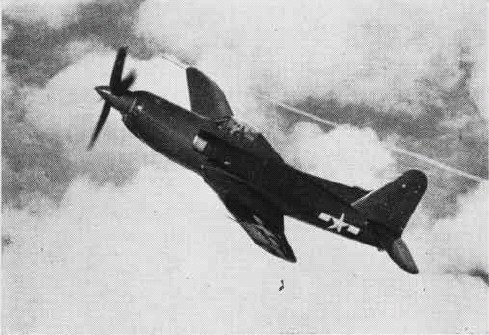|
General Electric J31
The General Electric J31 was the first jet engine to be mass-produced in the United States. Design and development After a visit to England mid-1941, General Henry H. Arnold was so impressed by flight demonstrations of the Gloster E.28/39 jet aircraft he had witnessed that he arranged for the Power Jets W.1X turbojet engine to be shipped by air to the U.S, along with drawings for the more powerful W.2B/23 engine, so that the US could develop its own jet engine. General Electric's extensive experience in turbocharger production made them the natural choice for producing such an engine. The initial prototype, the General Electric I-A, was essentially based on the W.2B/23. It first ran on 18 April 1942 and developed a static thrust of 1250lbf. The I-A air intake consisted of two peripheral slots which led to a double-sided, centrifugal compressor. A series of vanes guided the air into the impeller eyes. After radial compression, the air was diffused and turned 90 degrees rear ... [...More Info...] [...Related Items...] OR: [Wikipedia] [Google] [Baidu] |
Turbojet
The turbojet is an airbreathing jet engine which is typically used in aircraft. It consists of a gas turbine with a propelling nozzle. The gas turbine has an air inlet which includes inlet guide vanes, a compressor, a combustion chamber, and a turbine (that drives the compressor). The compressed air from the compressor is heated by burning fuel in the combustion chamber and then allowed to expand through the turbine. The turbine exhaust is then expanded in the propelling nozzle where it is accelerated to high speed to provide thrust. Two engineers, Frank Whittle in the United Kingdom and Hans von Ohain in Germany, developed the concept independently into practical engines during the late 1930s. Turbojets have poor efficiency at low vehicle speeds, which limits their usefulness in vehicles other than aircraft. Turbojet engines have been used in isolated cases to power vehicles other than aircraft, typically for attempts on land speed records. Where vehicles are "turbine-powere ... [...More Info...] [...Related Items...] OR: [Wikipedia] [Google] [Baidu] |
Allison Engine Company
The Allison Engine Company was an American aircraft engine manufacturer. Shortly after the death of James A. Allison, James Allison in 1929 the company was purchased by the Fisher Body, Fisher brothers. Fisher sold the company to General Motors, which owned it for most of its history. It was acquired by Rolls-Royce Holdings, Rolls-Royce plc in 1995 to become the US subsidiary, Rolls-Royce North America. History A predecessor of Allison Engine Company, the Concentrated Acetylene Company, was founded in September 1904 by James Allison, Percy C. Avery, Percy C. "Fred" Avery and Carl G. Fisher. Avery was the holder of the patent for the product. This company was the predecessor of the Prest-O-Lite, Prest-O-Lite Company, a manufacturer of acetylene headlights. An explosion at the acetylene gas works in downtown Indianapolis caused the company to relocate out of town, near the race track in Speedway, Indiana. Allison and Fisher raced automobiles at that track, each owning a race car t ... [...More Info...] [...Related Items...] OR: [Wikipedia] [Google] [Baidu] |
De Havilland Goblin
The de Havilland Goblin, originally designated as the Halford H-1, is an early turbojet engine designed by Frank Halford and built by de Havilland. The Goblin was the second British jet engine to fly, after Whittle's Power Jets W.1, and the first to pass a Type certificate, type test and receive a type certificate issued for an aircraft propulsion turbine. Although it was conceived in 1941 it remained unchanged in basic form for 13 years by which time it had evolved to the Mk. 35 export version. The Goblin was the primary engine of the de Havilland Vampire, and was to have been the engine for the F-80 Shooting Star (as the Allis-Chalmers J36) before that design switched engines due to production delays at Allis-Chalmers. The Goblin also powered the Saab 21R fighter, Fiat G.80 trainer and the de Havilland DH 108 "Swallow" experimental aircraft. The Goblin was later scaled up as the larger de Havilland Ghost, with the model numbers continuing from the last marks of the Goblin. ... [...More Info...] [...Related Items...] OR: [Wikipedia] [Google] [Baidu] |
Combustor
A combustor is a component or area of a gas turbine, ramjet, or scramjet engine where combustion takes place. It is also known as a burner, combustion chamber or flame holder. In a gas turbine engine, the ''combustor'' or combustion chamber is fed high-pressure air by the compression system. The combustor then heats this air at constant pressure as the fuel/air mix burns. As it burns the fuel/air mix heats and rapidly expands. The burned mix is exhausted from the combustor through the nozzle guide vanes to the turbine. In the case of a ramjet or scramjet engines, the exhaust is directly fed out through the nozzle. A combustor must contain and maintain stable combustion despite very high air flow rates. To do so combustors are carefully designed to first mix and ignite the air and fuel, and then mix in more air to complete the combustion process. Early gas turbine engines used a single chamber known as a can-type combustor. Today three main configurations exist: can, annular, and c ... [...More Info...] [...Related Items...] OR: [Wikipedia] [Google] [Baidu] |
Turbojet
The turbojet is an airbreathing jet engine which is typically used in aircraft. It consists of a gas turbine with a propelling nozzle. The gas turbine has an air inlet which includes inlet guide vanes, a compressor, a combustion chamber, and a turbine (that drives the compressor). The compressed air from the compressor is heated by burning fuel in the combustion chamber and then allowed to expand through the turbine. The turbine exhaust is then expanded in the propelling nozzle where it is accelerated to high speed to provide thrust. Two engineers, Frank Whittle in the United Kingdom and Hans von Ohain in Germany, developed the concept independently into practical engines during the late 1930s. Turbojets have poor efficiency at low vehicle speeds, which limits their usefulness in vehicles other than aircraft. Turbojet engines have been used in isolated cases to power vehicles other than aircraft, typically for attempts on land speed records. Where vehicles are "turbine-powere ... [...More Info...] [...Related Items...] OR: [Wikipedia] [Google] [Baidu] |
WikiProject Aircraft
A WikiProject, or Wikiproject, is a Wikimedia movement affinity group for contributors with shared goals. WikiProjects are prevalent within the largest wiki, Wikipedia, and exist to varying degrees within sister projects such as Wiktionary, Wikiquote, Wikidata, and Wikisource. They also exist in different languages, and translation of articles is a form of their collaboration. During the COVID-19 pandemic, CBS News noted the role of Wikipedia's WikiProject Medicine in maintaining the accuracy of articles related to the disease. Another WikiProject that has drawn attention is WikiProject Women Scientists, which was profiled by '' Smithsonian'' for its efforts to improve coverage of women scientists which the profile noted had "helped increase the number of female scientists on Wikipedia from around 1,600 to over 5,000". On Wikipedia Some Wikipedia WikiProjects are substantial enough to engage in cooperative activities with outside organizations relevant to the field at issue. For e ... [...More Info...] [...Related Items...] OR: [Wikipedia] [Google] [Baidu] |
Hickory Regional Airport
Hickory Regional Airport is three miles (5 km) west of Hickory, in Catawba County, North Carolina. It is owned by the City of Hickory. Facilities Hickory Regional Airport covers and has two asphalt runways: 6/24 is 6,400 x 150 ft. (1,951 x 46 m) and 1/19 is 4,400 x 150 ft. (1,341 x 46 m). In the year ending July 31, 2009 the airport had 40,504 aircraft operations, average 111 per day: 99% general aviation and 1% military. 68 aircraft are based on the airport. The airport has an operating control tower from 7:00am to 9:00pm daily. For weather information, the airport uses an automated airport weather station (ASOS). The airport terminal building was built in 1960. The most recent airline, Delta Connection, ceased operation from Hickory in 2005. The building houses airport administration and maintenance, a café, rental cars, a bus service, as well as the Hickory Aviation Museum. In 2003 a new building was built for the general aviation community. Severa ... [...More Info...] [...Related Items...] OR: [Wikipedia] [Google] [Baidu] |
Hickory Aviation Museum
Hickory Aviation Museum is an aviation museum at the Hickory Regional Airport in Hickory, North Carolina. It features a museum located in the former airport terminal with artifacts, a hangar with aircraft and outdoor exhibits of aircraft on the former airport ramp. History The museum originated from the Sabre Society, which was formed in 1991 to restore a North American FJ-3 Fury on display at a ballpark in Taylorsville, North Carolina. Co-founded by Kyle and Kregg Kirby, it opened to the public on 19 May 2007. In 2022, plans were announced for a new building located at Hickory Regional Airport. In addition to housing the museum's aircraft, it will also serve as a training facility for the Catawba Valley Community College. The new facility will cost a total of $22 Million, with $15 Million appropriated from the state budget and the remaining $7 Million from museum fundraising. Stipulations of the plan include relinquishing the spot the museum has within the commercial terminal s ... [...More Info...] [...Related Items...] OR: [Wikipedia] [Google] [Baidu] |
Bradley International Airport
Bradley International Airport is a public international airport in Windsor Locks, Connecticut, United States. Owned and operated by the Connecticut Airport Authority, it is the second-largest airport in New England. The airport is about halfway between Hartford, Connecticut, and Springfield, Massachusetts. It is the state of Connecticut's busiest commercial airport and the second-busiest airport in New England after Boston's Logan International Airport, with over 6.75 million passengers in 2019. The four largest carriers at Bradley International Airport are Southwest, Delta, JetBlue, and American with market shares of 29%, 19%, 15%, and 14%, respectively. As a dual-use military facility with the U.S. Air Force, the airport is home to the 103d Airlift Wing (103 AW) of the Connecticut Air National Guard. Bradley was originally branded as the "Gateway to New England" and is home to the New England Air Museum. In 2016, Bradley International launched its new brand, "Love the Journ ... [...More Info...] [...Related Items...] OR: [Wikipedia] [Google] [Baidu] |
New England Air Museum
The New England Air Museum (NEAM) is an American aerospace museum located adjacent to Bradley International Airport in Windsor Locks, Connecticut. The museum consists of three display hangars with additional storage and restoration hangars. Its collections include aircraft ranging from early flying machines to supersonic jets, as well as engines, and other pieces of flight-related equipment. Significant aircraft include * the Silas Brooks balloon basket - the oldest surviving American-built aircraft * the Sikorsky VS-44A - the sole remaining American-built commercial trans-oceanic four-engine flying boat * the Goodyear ZNPK-28 Blimp Control Car - one of only two surviving K-class control cars in the world. The museum library has approximately 6,000 aviation books, approximately 20,000 periodicals, approximately 10,000 technical manuals, approximately 21,000 photographs, nearly 8,000 slides, over 200 pieces of artwork, over 1,200 prints, and approximately 500 engineering drawing a ... [...More Info...] [...Related Items...] OR: [Wikipedia] [Google] [Baidu] |
GE J31 Aircraft Engine
General Electric Company (GE) is an American multinational conglomerate founded in 1892, and incorporated in New York state and headquartered in Boston. The company operated in sectors including healthcare, aviation, power, renewable energy, digital industry, additive manufacturing and venture capital and finance, but has since divested from several areas, now primarily consisting of the first four segments. In 2020, GE ranked among the Fortune 500 as the 33rd largest firm in the United States by gross revenue. In 2011, GE ranked among the Fortune 20 as the 14th most profitable company, but later very severely underperformed the market (by about 75%) as its profitability collapsed. Two employees of GE – Irving Langmuir (1932) and Ivar Giaever (1973) – have been awarded the Nobel Prize. On November 9, 2021, the company announced it would divide itself into three investment-grade public companies. On July 18, 2022, GE unveiled the brand names of the companies it will cr ... [...More Info...] [...Related Items...] OR: [Wikipedia] [Google] [Baidu] |
Ryan XF2R Dark Shark
The Ryan XF2R Dark Shark was an American experimental aircraft built for the United States Navy that combined turboprop and turbojet propulsion. It was based on Ryan Aeronautical's earlier FR Fireball, but replaced the Fireball's piston engine with a turboprop engine. Design and development The XF2R Dark Shark was based on Ryan Aeronautical's earlier FR Fireball, but replaced the Fireball's piston engine with a General Electric T31 turboprop engine driving a 4-bladed Hamilton Standard propeller. The turboprop made for much improved performance over the Fireball, but the Navy showed little interest in it; by that time, they had abandoned the idea of the combination fighter and were instead looking into all-jet fighters. The United States Air Force, however, showed a little more interest; they were at the time evaluating the Convair XP-81 of similar concept, and asked Ryan to modify the XF2R to use the Westinghouse J34 turbojet instead of the General Electric J31 used previously ... [...More Info...] [...Related Items...] OR: [Wikipedia] [Google] [Baidu] |




.jpg)

